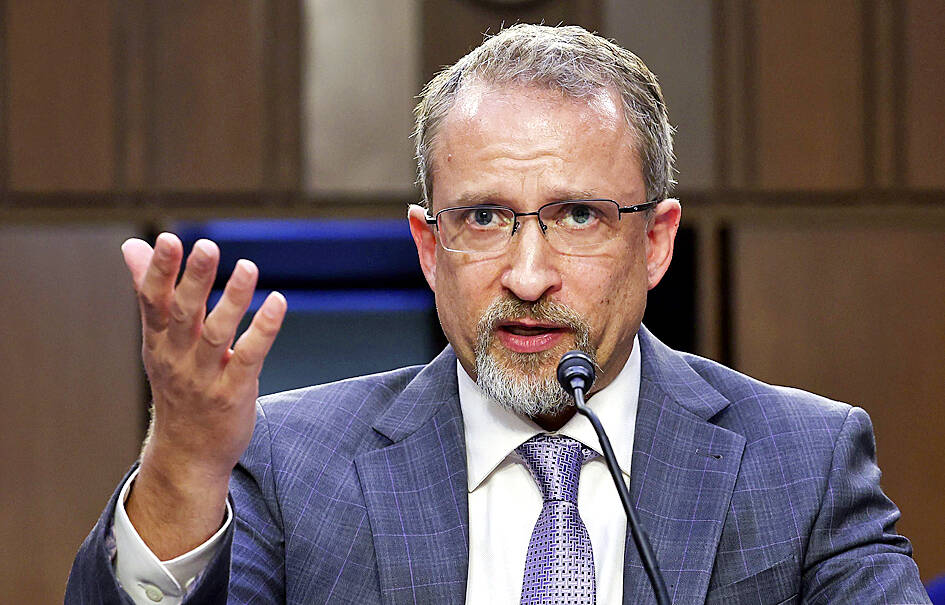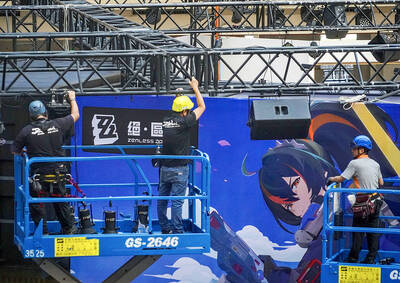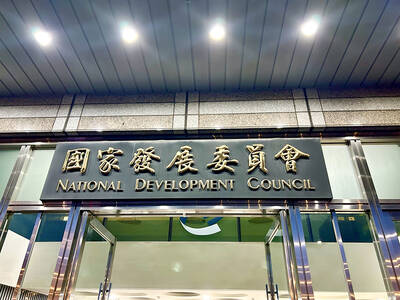Twitter Inc’s former head of security on Tuesday told the US Congress that there was “at least one agent” from China’s intelligence service on Twitter’s payroll and that the company knowingly allowed India to add agents to the company roster as well, potentially giving those nations access to sensitive data about users.
These were some of the troubling revelations from Peiter “Mudge” Zatko, a cybersecurity expert and Twitter whistle-blower who appeared before the US Senate Judiciary Committee to lay out his allegations against the company.
Zatko said that he was told about a week before his firing that “at least one agent” from the Chinese Ministry of State Security was “on the payroll” at Twitter.

Photo: AFP
He said he was similarly “surprised and shocked” by an exchange with Twitter chief executive officer Parag Agrawal about Russia — who was chief technology officer at the time — asked if it would be possible to “punt” content moderation and surveillance to the Russian government.
Zatko was the head of security for Twitter until he was fired early this year.
He told lawmakers that the social media platform is plagued by weak cyberdefenses that make it vulnerable to exploitation by “teenagers, thieves and spies,” and put the privacy of its users at risk.
“I am here today because Twitter leadership is misleading the public, lawmakers, regulators and even its own board of directors,” Zatko said as he began his sworn testimony. “They don’t know what data they have, where it lives and where it came from and so, unsurprisingly, they can’t protect it.”
“It doesn’t matter who has keys if there are no locks,” Zatko said.
“Twitter leadership ignored its engineers,” he said, in part because “their executive incentives led them to prioritize profit over security.”
In a statement, Twitter said that its hiring process is “independent of any foreign influence” and access to data is managed through a host of measures, including background checks, access controls, and monitoring and detection systems and processes.
A Delaware judge overseeing a case in which Tesla chief executive officer Elon Musk, who is trying to get out of a US$44 billion deal to buy Twitter, last week ruled that Musk can include new evidence related to Zatko’s allegations in the trial, which is set to start on Oct. 17.
During the Senate hearing, Musk posted a popcorn emoji in a Twitter message, an image often used to suggest that one is sitting back in anticipation of unfolding drama.

Taiwan is projected to lose a working-age population of about 6.67 million people in two waves of retirement in the coming years, as the nation confronts accelerating demographic decline and a shortage of younger workers to take their place, the Ministry of the Interior said. Taiwan experienced its largest baby boom between 1958 and 1966, when the population grew by 3.78 million, followed by a second surge of 2.89 million between 1976 and 1982, ministry data showed. In 2023, the first of those baby boom generations — those born in the late 1950s and early 1960s — began to enter retirement, triggering

ECONOMIC BOOST: Should the more than 23 million people eligible for the NT$10,000 handouts spend them the same way as in 2023, GDP could rise 0.5 percent, an official said Universal cash handouts of NT$10,000 (US$330) are to be disbursed late next month at the earliest — including to permanent residents and foreign residents married to Taiwanese — pending legislative approval, the Ministry of Finance said yesterday. The Executive Yuan yesterday approved the Special Act for Strengthening Economic, Social and National Security Resilience in Response to International Circumstances (因應國際情勢強化經濟社會及民生國安韌性特別條例). The NT$550 billion special budget includes NT$236 billion for the cash handouts, plus an additional NT$20 billion set aside as reserve funds, expected to be used to support industries. Handouts might begin one month after the bill is promulgated and would be completed within

The National Development Council (NDC) yesterday unveiled details of new regulations that ease restrictions on foreigners working or living in Taiwan, as part of a bid to attract skilled workers from abroad. The regulations, which could go into effect in the first quarter of next year, stem from amendments to the Act for the Recruitment and Employment of Foreign Professionals (外國專業人才延攬及僱用法) passed by lawmakers on Aug. 29. Students categorized as “overseas compatriots” would be allowed to stay and work in Taiwan in the two years after their graduation without obtaining additional permits, doing away with the evaluation process that is currently required,

RELEASED: Ko emerged from a courthouse before about 700 supporters, describing his year in custody as a period of ‘suffering’ and vowed to ‘not surrender’ Former Taiwan People’s Party (TPP) chairman Ko Wen-je (柯文哲) was released on NT$70 million (US$2.29 million) bail yesterday, bringing an end to his year-long incommunicado detention as he awaits trial on corruption charges. Under the conditions set by the Taipei District Court on Friday, Ko must remain at a registered address, wear a GPS-enabled ankle monitor and is prohibited from leaving the country. He is also barred from contacting codefendants or witnesses. After Ko’s wife, Peggy Chen (陳佩琪), posted bail, Ko was transported from the Taipei Detention Center to the Taipei District Court at 12:20pm, where he was fitted with the tracking